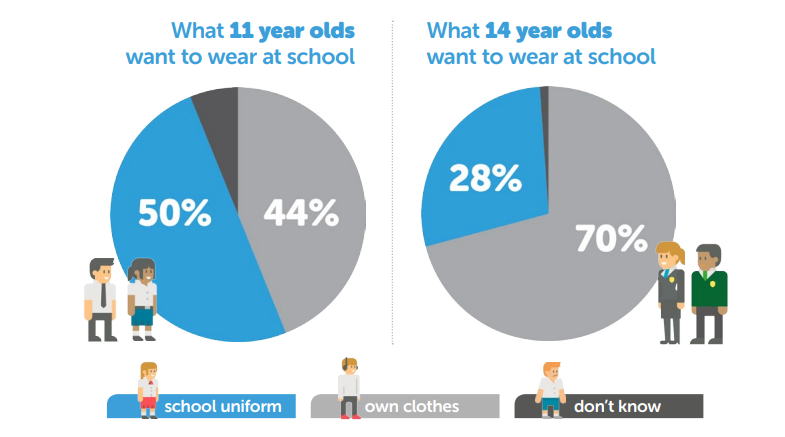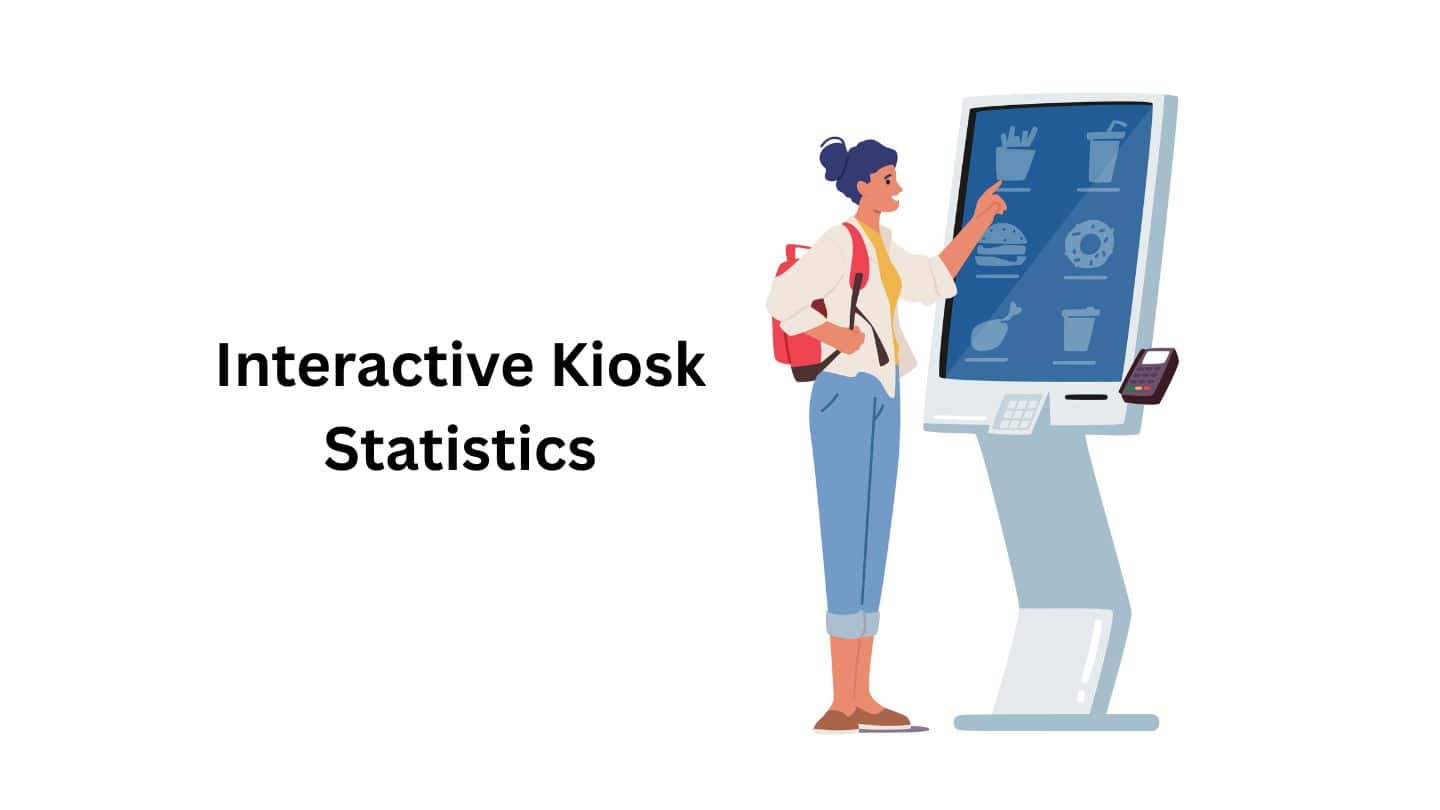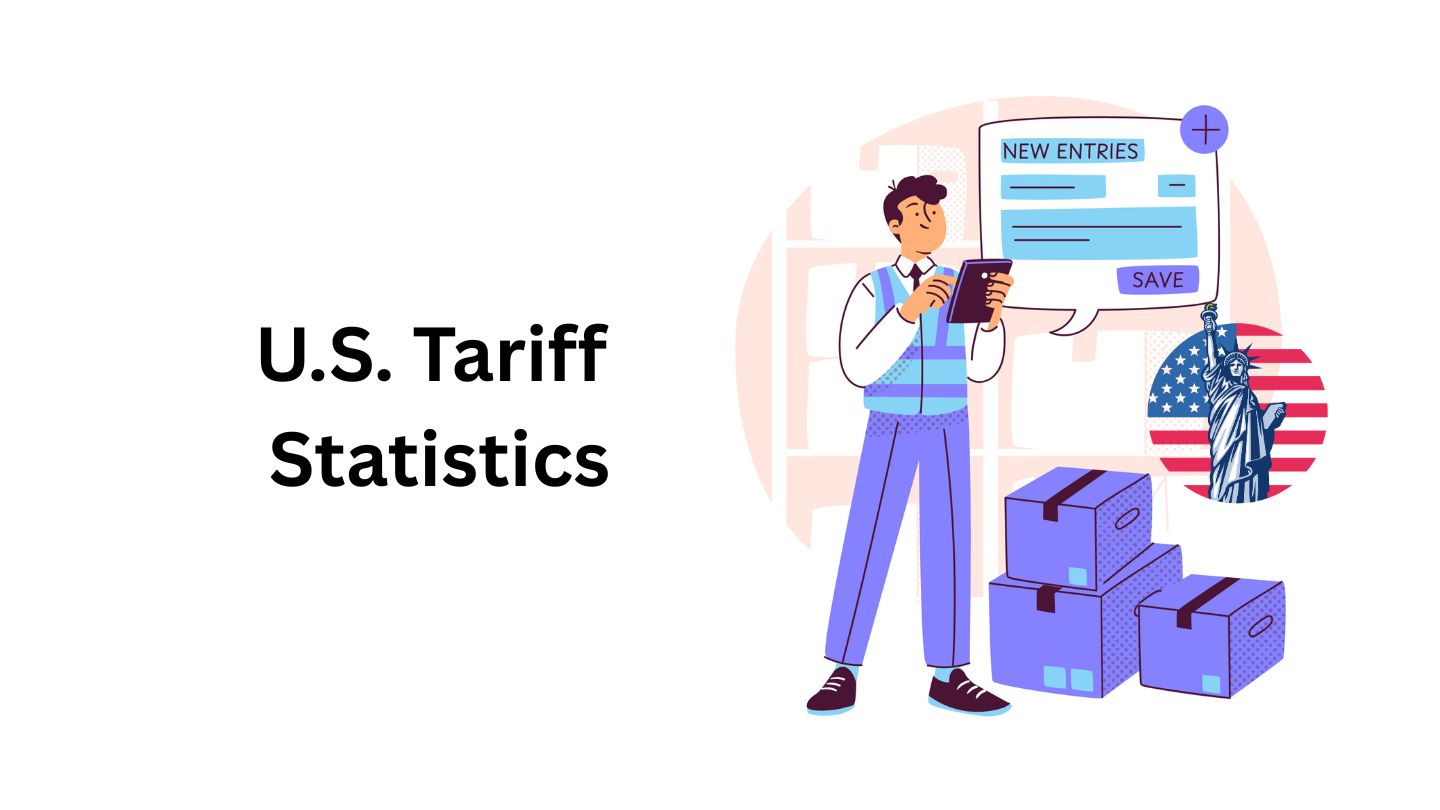School Uniforms Statistics By Market Size, Growth and Facts

Updated · Mar 14, 2025


TABLE OF CONTENTS
- Introduction
- Editor’s Choice
- School Uniform Statistics From The Research Literature
- Effects of School Uniforms
- UK School Uniform Statistics
- Dress Code in School Statistics
- Indian School Uniform Statistics
- School Uniforms Market Size and Growth Statistics Report
- Pros of School Uniforms in Market Research:
- Cons of School Uniforms in Market Research:
- Market Recommendations:
- Conclusion
Introduction
School Uniforms Statistics: Generally, school children are better when wearing uniforms, which has been a long-standing debate in educational sectors. Nevertheless, there needs to be more factual inquiry into the advantages or disadvantages of school uniform policies.
The students in the school who needed school uniforms did not display better social skills, externalizing and internalizing behavior, or school attendance compared to those without school uniforms. When a school decides to have students wear uniforms, it will likely face a host of approval and reproval. Through the school uniform statistics, we will help you decide whether to place yourself for or against this issue in education.
Editor’s Choice
- The adoption rate of school uniforms in Brazil costs an average of USD 49 per child.
- On average, girls’ school uniforms are 7% more costly than boys’ school uniforms.
- Approximately 49% of the government schools in the United States have a school uniform policy.
- In the UK, the average annual spend cost of school uniforms is USD 430.
- The cost of school uniforms in the UK decreased by 25% after the introduction of the Supermarket Price Wat in 2020.
- A survey done in Australia found that nearly 68% of parents report struggling with the cost of school uniforms.
- Roughly 55% of the parents think school uniforms are expensive in the United States.
- Almost all school uniforms cost between USD 150 to USD 200 for every child annually.
- Low-income families spend an average of USD249 per kid on school uniforms.
- According to a survey of South African parents, an average of USD 68 to USD 204 is spent on every child’s school uniforms per year.
- In the United States, private schools cost almost USD 500 per child annually.
- A survey in the United Kingdom found that families spend USD 1.45 billion annually on school uniforms.
- Nearly 78% of families think that school uniforms are expensive in India.
- The families spend an average of USD 578 per child on school uniforms annually in Australia.
You May Also Like To Read
- How Late Is The Closest Grocery Store Open?
- Online Food Ordering Statistics
- Kids’ Clothing Statistics
- Jewellery Statistics
- Amazon Buy Box Statistics
- Men’s Clothing Statistics
- Baby Care Products Statistics
- Women’s Clothing Statistics
School Uniform Statistics From The Research Literature
- In the UK, there are a large number of kids wearing school uniforms to school, and it’s a part of the culture.
- The UK Trutex study says about 75% of mothers believe uniforms make their lives more accessible in the UK.
- Children between the ages of 6 and 7 think that their uniform helps them represent their school.
- According to school uniform statistics, almost 89% of teachers in the UK think school uniforms reduce bullying.
- Blue is the most common color for school uniforms.
- According to the NAESP study, they also examined issues like wardrobe battles, which parents said were similarly reduced by 94% by mandatory uniforms.
- Nearly 79% of the school’s officials think that uniforms improve the safety of the school.
- As per a study in the UK, the average parent pays almost 337 pounds every year in uniform.
- As per the study, having a different school uniform increases children’s participation in physical education lessons.
- Schools that have uniforms have better-behaved students.
- According to Trutex, about 94% of UK teachers think that school uniforms improve the school’s image in the community.
- 6 in 9 UK Students think that school uniforms help them fit in.
- Roughly 72% of parents and 86% of school officials think uniforms minimize peer pressure.
- The study has not proved that uniforms have any impact on the academic performance of children.
- According to the Children’s Society Study UK, about 23% of parents have sent their children to an unclean and incorrect uniform and ill-fitting school because of the high cost of buying a new uniform, cleaning it, or replacing it.
- In the US, almost 23% of primary school kids need uniforms, more than 18% of middle school students, and 10% of high school students.
- A study by Chris Bauman and Hana Krskova published in the International Journal of Educational Management stated that students in uniforms are better listeners.
- As per school uniform statistics, the first-ever uniform was founded in 1552.
- Almost 20% of the children in US schools have uniform policies.
Effects of School Uniforms
- As per the study, the children in India who needed to wear uniforms experienced increased attendance after its implementation.
- As per Can We Ensure Safe School, school uniforms can create a team culture and a sense of unity in schools.
- As per Prevention Works, school uniforms have decreased group activities in school because students are not allowed to wear fancy colors to school, lowering gang affiliations’ presence.
- According to school uniform statistics, the researchers have found that students who wear uniforms have seen a decrease in tardiness and a development in academic performance.
- There is no difference in the graduation rate and the count of disciplinary incidents compared to the schools before uniforms.
- According to the Journal of School Violence, schoolchildren have noted that their peers behave well when they wear school uniforms.
- Brigham Young University states that older students associated school uniforms with decreased bullying.
- The author of Race, Population Studies, and America’s Public School states that uniforms hinder students’ creativity.
UK School Uniform Statistics
- According to the Department of Education, Uniforms play a valuable role in contributing to a school’s ethos and setting an appropriate tone.
- 83% of the teachers see uniforms as contributing to a happy school community.
- 4 out of 5 teachers think a school uniform positively affects pupils’ behavior.
- 76% of London-based parents are more likely to agree that wearing information reduces the incidence of bullying.
- 60% of 11-year-olds believe wearing a uniform does not allow them to show their personality.
- In the United States, more than 160,000 children miss school every day due to bullying and other classroom intimidations.
- Almost 20% of the children are reluctant to confide in teachers or parents that they are being bullied.
- 2/3rd of the 11-year-olds would not be worried at such a prospect even though more than 50% indicate a desire to wear uniforms.
- 42% of 7-year-olds feel that their personalities shine wearing a uniform.
- About 6 in 9 mothers think uniforms reduce students’ pressure to wear the latest fashion.
- 72% of parents of 16-and 17-year-olds agree that uniforms reduce the pressure to wear expensive and designer clothes and waste money on them.
- Almost 66% of parents of school-aged children say that the fact they wear uniforms makes their lives easier.

(Source: trutexbtru2u.co.uk)
- 18% of parents say that school uniforms do not make their lives easy, which may reflect personal circumstances.
- 60% of boys and about 59% of girls are keen to wear their clothes.
- About 89% of the teachers believe that wearing a uniform reduces bullying.
- 94% of teachers think that parents, local communities, and potential students’ perception of a school can be improved if they see its pupils wearing a school uniform.
- 70% of the 11-year-old children who support wearing uniforms agree that school uniforms can help them feel part of the crowd.
- Nearly 61% of the parents think that wearing a uniform counteracts bullying within the school, with 11% disagreeing.
- Research shows that 75% of children between the ages of 6 and 7 believe that wearing a uniform helps them fit in.
- 68% of the children with full-time working parents associate school uniforms with fitting in.
- 59% of school students in the South of England think that uniforms are uncomfortable, compared to 31% in East England.
- About 59% of 6- —to 15-year-old children who were surveyed would rather wear their outfits, and 37% are happy wearing their school uniforms.
- 14-year-old children prefer wearing their clothes to school and are convinced that a uniform can help them fit in.
- 53% of 6-year-old and 51% of 7-year-old students have no qualms about their uniform, and their 3rd agree that they are uncomfortable wearing a uniform.
- 51% of students at schools in the Midlands and Wales think that wearing uniforms reduces the incidence of bullying in school.
- About 53% of all the students believe that wearing a uniform prevents them from demonstrating their individuality.
- 47% of the students find school uniforms uncomfortable, whereas 53% feel that a uniform does not allow them to show their personalities.
- 35% of the children think wearing a uniform makes school a happy place.
- About 465 students think that wearing a uniform also helps them make bullying less likely in school, including 18% who agree strongly.
- 77% of the students who live in homes where the head of the family is not working think that wearing a uniform helps them to blend in with their classmates.
You May Also Like To Read
- Tripadvisor Statistics
- How Many Employees Does Target Corporation Employs?
- Google Shopping Statistics
- Online Shopper Statistics
- Food Truck Statistics
- Shopify Statistics
- Affiliate Marketing Statistics
- Content Marketing Statistics
- Astonishing Etsy Statistics
Dress Code in School Statistics
- About 66% of parents surveyed on school dress code, 34% have an opposite opinion.
- Nearly 58% of students are treated differently after the dress code enforcement reported negative feelings.
- 80% of the school administrators believe that the dress code positively affects the students.
- Nearly 78% of the teachers thought dress codes improved school safety.
- Roughly 71% of the students do not agree that the dress code contributes to a positive school environment.
- 44% of the schools in the US have politics addressing dress codes.
- Nearly 85% of the educators think dress code contributes to a more respected school environment.
- Almost 54% of females feel they were targeted by the dress code more than the males.
- Almost 20% of the public schools in the US have clearly defined uniform policies.
- As per school uniform statistics, 90% of the students wearing dress codes reported zero impact on their academic performance.
- About 72% of the parents think that the school uniform codes benefit the students.
- NYCLU reported that almost 42% of the schools in NYC practiced nonconstitutional dress codes.
Indian School Uniform Statistics
- According to the Census, 68.84% of the Indian population lives in rural areas, and among them, 71% of students go to government schools.
- The proportion of admissions to total enrolment in government schools at the elementary level is ST, with 76.5%; SC, 68.8%; and OBC, 55.6% students.
- SC students are admitted to private unaided schools at a primary level of 13.6%, and ST students are admitted to 4.7%.
- The household’s annual income is 21% of SC, 34% of ST, and 8% of OBC, which is lower than the average national income.
- 33% of students from SC, ST, and OBC drop out of the state government schools in class 10th.
School Uniforms Market Size and Growth Statistics Report
- The school uniform market size was estimated at USD 38,505.66 million in 2021 and is predicted to reach USD 58,950.69 million by 2028 with a CAGR of 6.3%.
- Many governments are taking the initiative to improve the educational sector.
- In June 2020, the prime minister of the UK announced a transforming ten-year school rebuilding project with a funding of USD 1.3 billion.
- School uniforms for girls include polo shirts, pants, shorts, jumpers, dresses, skirts and tops, sweaters, hoodies and fleece, blazers, sportswear, and shoes.
- The key market players in the global school uniform market include Trutex Limited, John Lewis, The Uniform Company, Flash Uniforms, and Alinta.
Pros of School Uniforms in Market Research:
- Cost Efficiency: Uniforms are a budget-friendly choice for parents, often available at lower costs during back-to-school sales. A typical 5-pack of basic white polo shirts for school uniforms is significantly more economical than individual outfits.
- Hand-Me-Down Options: Passing down uniforms as hand-me-downs supports affordability, allowing parents to access free or low-cost uniforms once their children outgrow them.
- Visible Poverty Reduction: Uniforms eliminate visible distinctions based on clothing, reducing the potential for bullying related to socio-economic status.
- Market Appeal: Uniforms contribute to a positive school image, potentially attracting new parents and garnering respect within the community.
- Brand Identity: Uniforms help schools establish a distinctive identity, signaling values and affiliations and attracting like-minded families.
- Market Perception: The perception that uniforms improve school safety can be a selling point for parents concerned about their child’s well-being.
Cons of School Uniforms in Market Research:
- Lack of Freedom of Expression: Uniforms that limit creative expression might deter parents from seeking schools that prioritize individuality and personal development.
- Visible Diversity Suppression: Uniforms suppressing visible diversity could concern parents valuing inclusivity and a multicultural environment.
- Parental Cooperation Challenges: Uniform policies relying on parental cooperation may present challenges in terms of compliance, affecting market appeal.
- Gender Expression Issues: Uniforms conflicting with evolving understandings of gender expression might deter parents from seeking progressive educational environments.
- Market Differentiation: Overly specific and complex uniform requirements can make it challenging for parents to find suitable options, impacting market competitiveness.
- Promotion of Social-Class Identities: Uniform policies reinforcing social-class identities may be a consideration for parents seeking diverse and inclusive educational settings.
- Market Research Insights: Gathering insights from parents about their uniform preferences can inform schools on how to enhance market appeal.
- Market Adaptability: Schools allowing student input on uniform decisions demonstrate adaptability and responsiveness to market demands.
- Consumer Perception: Awareness of consumer perceptions regarding uniform attractiveness and comfort can influence market positioning.
- Market Sensitivity: Recognizing the financial burden of upfront uniform costs can help schools address market sensitivity and provide solutions.
- Diversity Embrace: Embracing cultural diversity within uniforms can be a market differentiator, appealing to parents valuing cultural expression.
- Market Competitiveness: Schools offering flexible uniform policies aligned with contemporary values may gain a competitive edge.
- Market Dynamics: Understanding the impact of uniforms on bullying and safety perceptions is crucial for schools navigating the market dynamics.
- Parental Involvement: Highlighting the importance of parental involvement in uniform compliance can position schools positively in the market.
Market Recommendations:
- Market Positioning: Schools can leverage uniform policies for positive market positioning by aligning them with contemporary values and inclusivity.
- Market Differentiation Strategies: Implementing diverse and inclusive uniform policies can serve as a unique selling point, differentiating schools in the market.
- Market Responsiveness: Gathering feedback from parents through market research helps schools stay responsive to evolving preferences and concerns.
- Market Adaptation: Adapting uniform policies based on market insights fosters a positive perception and enhances a school’s market competitiveness.
- Market Sensibility: Considering the financial impact of uniforms on parents demonstrates market sensibility and can contribute to positive market relations.
Conclusion
The above school uniform statistics show that school uniforms and dress codes provide various benefits. Increased student attendance, reduced bullying, and improved academic performances are all supportive data. With an increasing acknowledgment regarding schools and education and also due to various government schemes available for gaining free education, a large number of schools are constructed.
In this situation, having a school uniform shows the difference between all the schools. Children get a feeling of belongingness with the school at the same time. The school uniform market size was estimated at USD 38,505.66 million in 2021 and is predicted to reach USD 58,950.69 million by 2028 with a CAGR of 6.3%.
Sources

Joseph D'Souza started Coolest Gadgets in 2005 to share his love for tech gadgets. It has since become a popular tech blog, famous for detailed gadget's reviews and companies statistics. Joseph is committed to providing clear, well-researched content, making tech easy to understand for everyone. Coolest Gadgets is a trusted source for tech news, loved by both tech fans and beginners.











